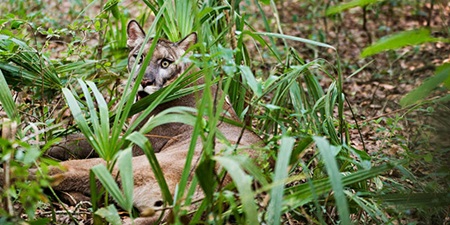The City of Carlsbad is hosting its annual update on its work to protect native plants and wildlife as part of the city’s Habitat Management Plan on Thursday, March 2.
Carlsbad Habitat Management Plan meeting
Thursday, March 2
10 a.m. to noon
Online, via Microsoft Teams
Join the meeting
Meeting ID: 259 450 338 740
Passcode: HecRqJ
The 2022 report, which will be presented at Thursday’s meeting, lays out some impressive successes, including a citywide survey conducted in spring 2022 that shows the federally threatened coastal California gnatcatcher is still thriving in Carlsbad.
Protecting the gnatcatcher and preserving the coastal sage scrub it calls home was one of the top priorities when the Habitat Management Plan was created. The survey shows the plan is working as intended to support the gnatcatcher and a variety of other sensitive species and habitats.
Before Carlsbad’s plan was adopted, habitat areas in the city were set aside on a project-by-project basis without a coordinated, big-picture approach. Under the plan, large habitat areas are connected by wildlife movement corridors that help preserve a healthy ecosystem.
Additional Habitat Management Plan projects in the past year included:
Long-term monitoring of rare plants, sensitive wildlife and native habitat
Studying wildlife movement, including at the Village H South property
Inspections of 11 unmanaged preserves totaling approximately 667 acres to identify problems and opportunities
Mapping of native habitats
Removing hundreds of acres of invasive species
Repairing and replacing damaged signage and fencing
Installing measures to control and repair erosion
Working with volunteers to educate and engage the community in habitat preservation
About the plan
The City of Carlsbad is the only city in North San Diego County with an approved Habitat Management Plan, setting aside nearly 6,200 acres of open space as preserves for native plants and wildlife through a comprehensive environmental program.
The plan was created to guide sustainable development, conserve native habitat, allow for wildlife movement and permanently protect 47 rare plant and animal species within the city.
Since the plan was adopted in 2004, 6,195 acres of natural land has been preserved as habitat for plants and wildlife, never to be developed. The goal is to preserve 6,478 acres of natural open space after all development in the city has occurred. So far, the city has achieved 96% of that target. The city’s preserves include wetland habitats, such as aquatic marsh and willow scrub, and a variety of upland habitat types, such as coastal sage scrub, native grasslands and oak woodlands.
To learn more about the city’s preserve system and the work being done to protect and preserve native habitat, visit the city’s Habitat Management Plan webpage.
More information
Rosanne Humphrey
Senior program manager
rosanne.humphrey@carlsbadca.gov



















